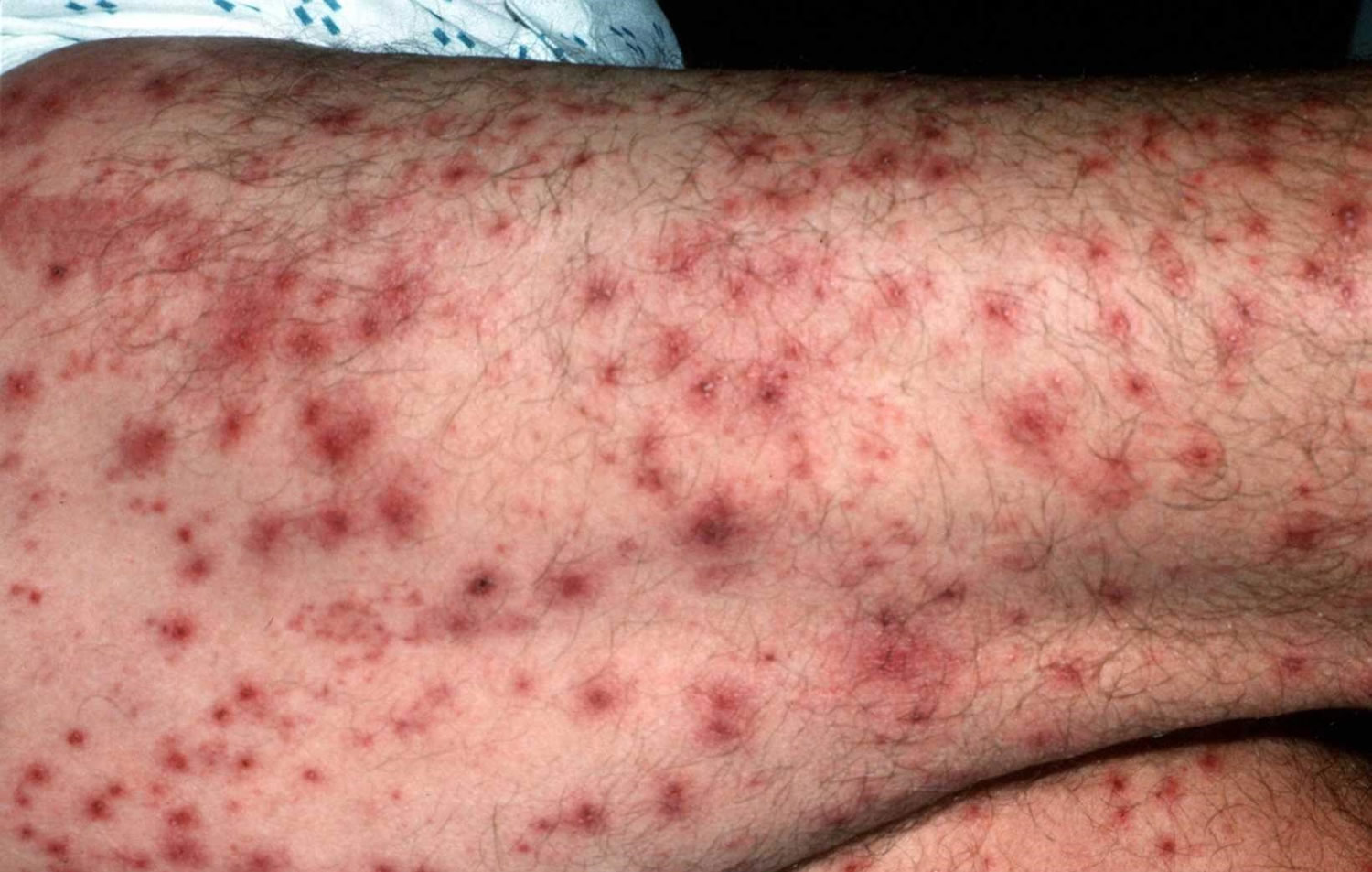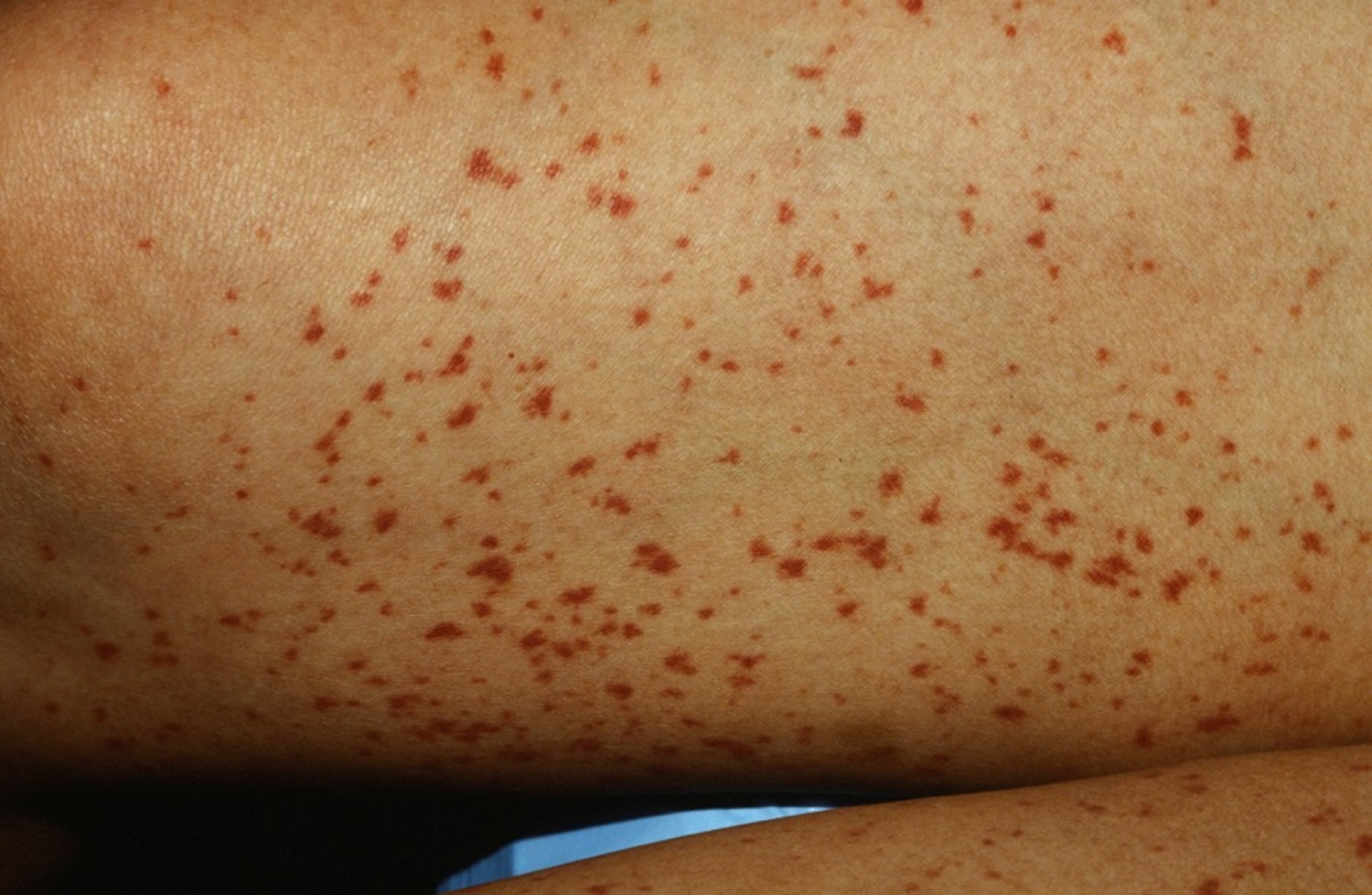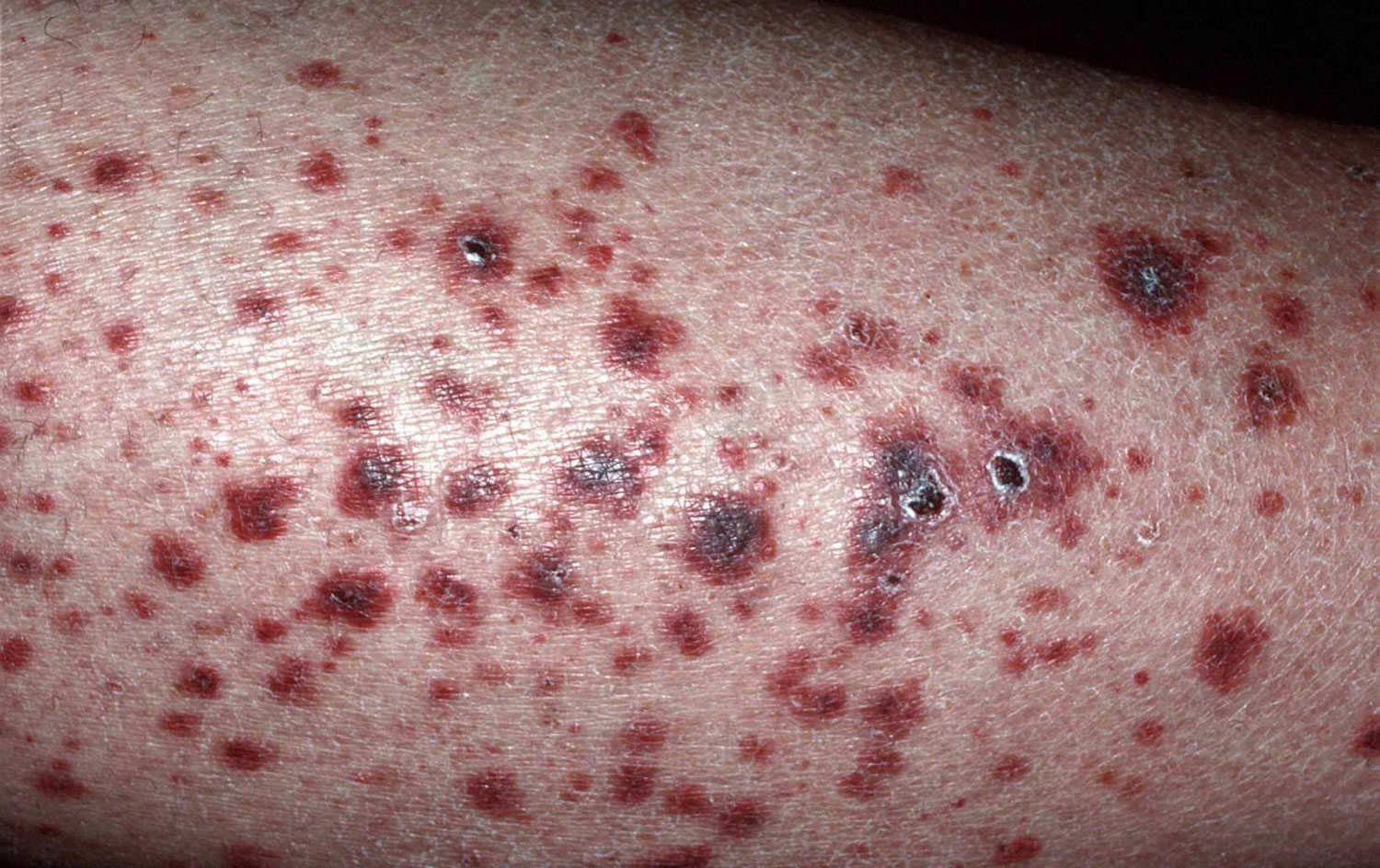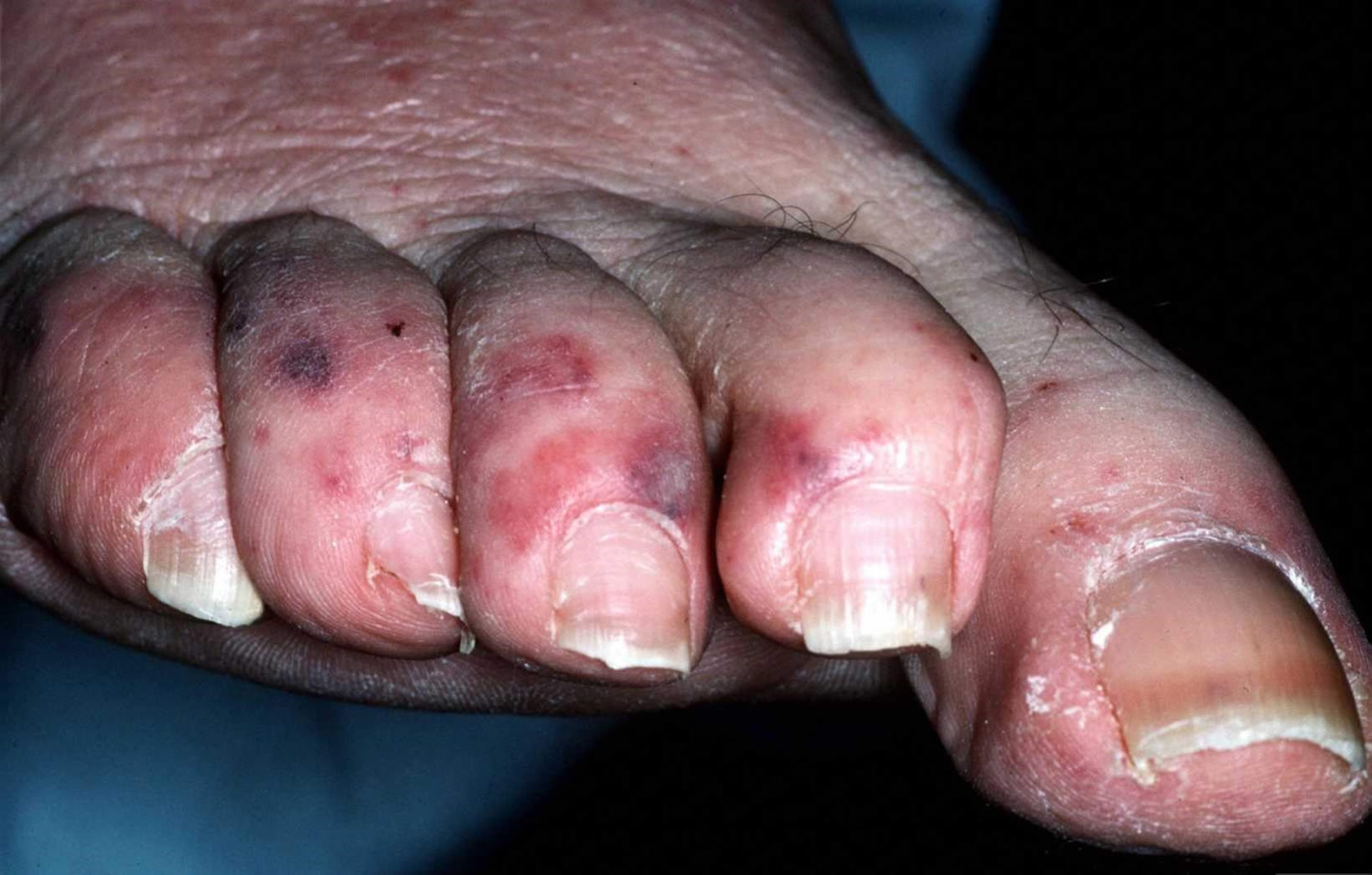Contents
What is leukocytoclastic vasculitis
Leukocytoclastic vasculitis is a vasculitis of the small vessels and is also described as a hypersensitivity vasculitis.
The American College of Rheumatology established a list of criteria for the classification of hypersensitivity vasculitis (leukocytoclastic vasculitis). The criteria are 1:
- Age at disease onset >16 years. Development of symptoms after age 16.
- Use of a drug before the development of symptoms. Medication was taken at the onset of symptoms that may have been a precipitating factor.
- Palpable purpura. Slightly elevated purpuric rash over one or more areas of the skin; does not blanch with pressure and is not related to thrombocytopenia.
- Maculopapular rash. Flat and raised lesions of various sizes over one or more areas of the skin.
- Biopsy of the skin rash that shows neutrophils, a type of white blood cells, around a small vessel (in the wall of a venule or arteriole)
It should be noted that having three or more of these criteria does not always distinguish leukocytoclastic vasculitis (hypersensitivity vasculitis) from other forms of vasculitis, particularly when the only or first symptom of vasculitis is a skin rash.
The presence of a skin rash, usually red spots, is the main symptom in hypersensitivity vasculitis. A biopsy of these skin spots reveals inflammation of the small blood vessels, called a leukocytoclastic vasculitis.
Figure 1. Leukocytoclastic vasculitis rash
Figure 2. Leukocytoclastic vasculitis
Figure 3. Leukocytoclastic vasculitis
Figure 4. Leukocytoclastic vasculitis
Leukocytoclastic vasculitis causes
Leukocytoclastic vasculitis may be caused by a specific drug or occur in association with an infection, but it may also be idiopathic, meaning there is no known cause. Although drugs are the most common cause, drug-induced vasculitis is a poorly defined disorder.
The drugs that are most frequently listed as being associated with the development of Leukocytoclastic vasculitis include:
- Penicillin,
- Cephalosporin,
- Sulfonamide,
- Some medicines used to control blood pressure (loop and thiazide-type diuretics),
- Phenytoin and
- Allopurinol.
Infections that may be associated with leukocytoclastic vasculitis include hepatitis B or C virus, chronic infection with bacteria and HIV virus.
Other causes have been associated with this leukocytoclastic vasculitis (hypersensitivity vasculitis) including inflammatory bowel disease, larger vessel vasculitis (e.g., Polyarteritis nodosa [PAN], Granulomatosis with polyangiitis), malignancy (e.g., lymphoma, myeloma, leukemia, solid tumors [e.g., ovarian]), drugs (e.g., levamisole associated with cocaine use), Propylthiouracil can induce ANCA-associated microscopic polyangiitis or lupus-like disease, the nicotine patch, infection (e.g., urinary tract infection, Parvovirus B19, streptococcus, hepatitis B/C, mycobacterium leprae, Brucellosis), cryoglobulins, macroglobulinemia, collagen vascular disease (e.g., SLE, Sjögren’s syndrome), rheumatoid vasculitis, chronic active hepatitis, and the food additive sodium benzoate 2.
What are the symptoms of leukocytoclastic vasculitis?
A shower of purpuric lesions, both palpable and non-palpable, concentrated on the legs, occurs in the classic presentation of leukocytoclastic vasculitis.
The patient often feels well, but the major symptoms of leukocytoclastic vasculitis, in addition to a skin rash, are joint pains, fever, malaise, nausea and increasing size of lymph nodes. In most patients, symptoms begin 7 to 10 days after the exposure to the drug or infection, but can be as short as two to seven days in some people.
Other lesions may occur including purpuric nodules and/or papules, necrosis, ulceration, hemorrhage, bulla, erythema multiforme-like lesions, and annular lesions. Acute, subacute, and chronic forms occur. Erythema elevatum diutinum, Henoch-Schonlein purpura, and urticarial vasculitis show leukocytoclastic vasculitis on biopsy. Systemic involvement should be considered including renal, gastrointestinal, lung, and central nervous system. Erythema multiforme or septicemia with cutaneous lesions may be part of the differential diagnosis.
Often, the classic eruption of leukocytoclastic vasculitis comes and goes before a workup can be completed.
Organ involvement in addition to the skin rash is very rare, but can be severe. Kidney inflammation and even more rarely liver, lung, heart and brain injury have occurred in patients with leukocytoclastic vasculitis.
Symptoms of kidney involvement may not be noticed by the patient, but can be evaluated by a doctor looking at a urine sample for small amounts of blood and protein.
Kidney failure is not common. Kidney failure can be ‘acute’, meaning there is a fast loss of kidney function, but supportive treatment with dialysis can be done for a few days or weeks and kidney function returns. In some cases, ‘chronic’ kidney failure occurs, requiring an ongoing need for dialysis because the kidneys do not recover their normal function.
Leukocytoclastic vasculitis treatment
If a drug may have caused leukocytoclastic vasculitis, then discontinuation of that specific drug usually leads to the disappearance of symptoms within a few days or weeks. If an infection caused the hypersensitivity, then treatment of the infection usually results in the disappearance of symptoms.
In some patients, especially those with ongoing infections, there may be ongoing or ‘chronic’ symptoms of leukocytoclastic vasculitis. Drugs used to manage the skin rash and joint pains associated with leukocytoclastic vasculitis might include corticosteroids and/or nonsteroidal anti-inflammatory drugs.
Prednisone is highly effective but has significant side effects. Other steroid-sparing agents may be used. Minocycline 100 twice daily was very helpful combined with low-dose prednisone in a patient with rheumatoid arthritis and leukocytoclastic vasculitis.
In patients with more severe or ongoing skin rashes that are not due to infection, drugs such as colchicine, antihistamines, and dapsone (or a combination of these drugs) may be helpful to control symptoms. Patients with disease in organs beyond the skin should be referred to a specialty doctor such as a nephrologist if the kidneys are involved.
- Critieria for Hypersensitivity Vasculitis. https://www.rheumatology.org/Portals/0/Files/Critieria%20for%20Hypersensitivity%20Vasculitis%201990_Tree%20Format.pdf[↩]
- LEUKOCYTOCLASTIC VASCULITIS (SMALL VESSEL VASCULITIS). http://www.regionalderm.com/Regional_Derm/files/leukocytoclastic_vasculitis.html[↩]










